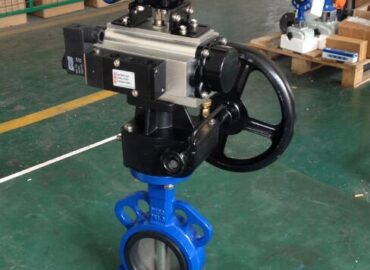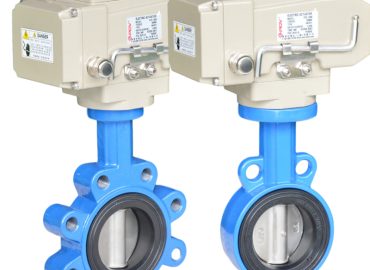High-Temperature Butterfly Valves are a critical component in many industrial applications, providing reliable control of fluid flow even in the most extreme conditions. These specialized valves are designed to withstand high temperatures, making them an essential tool for industries such as power generation, chemical processing, and oil and gas. In this article, we will delve into the design aspects that allow these valves to function effectively under such demanding circumstances, and explore their wide range of applications. Whether you’re an engineer looking to enhance your understanding or a curious reader interested in industrial technology, this introduction to High-Temperature Butterfly Valves will provide valuable insights.
Introduction
High Temp Butterfly Valves are a specialized type of quarter-turn valve that regulates the flow of fluids through a pipe using a disc. Designed to withstand elevated temperatures, these valves are a crucial component in various industrial settings, including HVAC systems and chemical processing plants.
The primary distinction between standard butterfly valves and high-performance butterfly valves lies in their capacity to endure harsh conditions. High-performance butterfly valves are equipped with PTFE seats, enabling them to handle chemically reactive and corrosive liquids, gases, and steam. This makes them a more durable, reliable, and cost-effective alternative for high-temperature, high-pressure applications.
The disc design in wafer butterfly valve for high-temperature and high-pressure applications is typically engineered to minimize valve seat wear and enhance sealing. The ST series high-temperature butterfly valves offered by Triad Process, for instance, come with optional metal seats and are rated for services up to 700°F.
Butterfly valves are particularly well-suited for managing large fluid flows, making them indispensable in water distribution systems and water treatment plants. In HVAC systems, they assist with air-flow rate changes, offered in both manual and automatic, light and heavy-duty options.
In conclusion, High-Temperature Butterfly Valves, with their unique design and wide range of applications, play a vital role in many industries. Their ability to function effectively under demanding circumstances underscores their significance in the realm of industrial technology.
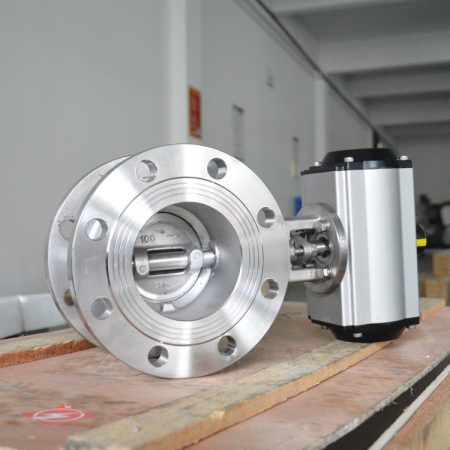
Brief explanation of what High-Temperature Butterfly Valves are.
High-Temperature Butterfly Valves are a specialized variant of butterfly valves, which are integral components used to control the flow of liquids within pipelines. These valves operate by rotating a disc, the ‘butterfly’, within a pipe to open, close or regulate the fluid flow. What sets High-Temperature Butterfly Valves apart is their ability to withstand and operate effectively in extremely high-temperature environments. This is achieved through the use of materials with high thermal resistance and specific design elements. As such, they are commonly utilized in industries where high-temperature operations are the norm, such as power plants, oil and gas refineries, and certain chemical processes.
Overview of the importance and relevance of this topic.
Understanding High-Temperature Butterfly Valves is of immense importance due to their critical role in various industrial applications. Their unique ability to operate effectively under high temperatures makes them an indispensable component in sectors such as power generation, oil and gas, and chemical processing. Their relevance extends to the safety, efficiency, and reliability of these industries’ operations. Moreover, as environmental regulations become increasingly stringent, the need for components that can withstand harsh conditions without compromising performance or safety is more pertinent than ever. Consequently, gaining insights into the design and applications of High-Temperature Butterfly Valves is not only important for engineers and technicians in the field but also for stakeholders looking to invest in resilient and reliable industrial infrastructure.
The Basics of Butterfly Valves
Butterfly valves are a type of industrial valve that control the flow of various mediums – liquids, gases, and semi-solids – within a system. They are named for their distinctive design, which features a circular disc or ‘butterfly’ that rotates on an axis to open, close, or regulate the flow of the medium. This disc is positioned in the center of the pipe, and a rod passes through it to an actuator on the outside of the valve. When the actuator is turned, the disc turns too. A quarter-turn moves the disc from a position where it blocks the flow entirely to one where it allows full flow. Butterfly valves are favored for their simplicity, reliability, and low cost compared to other types of valves. They are also lightweight and require less support than other valve types, making them a practical choice for large pipe diameters. The range of materials available for the disc and sealing element means butterfly valves can be used in a variety of applications, from food and beverage processing to oil and gas pipelines. However, they may not be suitable for some applications where precise flow control is needed or where the medium is abrasive or contains suspended particles, as these can cause wear on the disc and seals.
General information about butterfly valves.
Butterfly valves are a critical component in many industrial applications due to their simple yet effective design. They are a type of quarter-turn valve that uses a rotary disc to control the flow of fluids within a piping system. This disc, often referred to as the ‘butterfly’, is mounted on a valve stem and can rotate within the valve body. By rotating the disc a quarter turn, the valve can be fully open, fully closed, or somewhere in between for modulating service.
The primary components of a butterfly valve include the body, disk, stem, and seat. The body fits between two pipe flanges and comes in two types – lug and wafer. The disc is the blocking element that rotates to control the fluid flow, and the stem connects the actuator to the disc. The seat provides a seal when the valve is in the closed position.
One of the key advantages of butterfly valves is their simplicity. They consist of fewer parts compared to other types of valves, making them easier to repair and maintain. Their lightweight design also means they require less support, making them a practical choice for large pipe diameters. Furthermore, they are usually less expensive than other types of valves of the same size and require less torque to operate effectively.
Butterfly valves find extensive use across various industries, from water supply systems where they regulate water flow, to chemical and oil and gas industries where they control the flow of various corrosive and non-corrosive fluids.
Explanation of how they work.
Electric butterfly valve operate on a fairly simple principle. They consist of a disc attached to a rotating stem, which is positioned in the middle of the pipe. When the valve is fully open, the disc rotates a quarter turn to align with the flow of fluid, offering little resistance and allowing the fluid to pass through freely. Conversely, when the valve is closed, the disc rotates back to block the passage, stopping the flow of fluid. The disc’s position can also be adjusted to any point between fully open and fully closed, allowing for precise control over the flow rate. This operation can be manually controlled or automated using actuators. The simplicity of this design makes butterfly valves highly reliable and easy to maintain, contributing to their widespread use across various industries.

Design of High-Temperature Butterfly Valves
High-Temperature Butterfly Valves are specially designed to handle extreme temperatures without compromising their performance or reliability. The design of these valves typically involves the use of materials that can withstand high thermal stress, such as stainless steel for the body and disc, and graphite or metal for the sealing element. The disc is usually double offset or triple offset, which reduces the wear on the seal by minimizing contact until the valve is nearly closed. This feature also provides a tighter seal when the valve is closed, preventing leakage. The stem design is another critical aspect; it is often blowout-proof for safety and may have a two-piece design to allow for thermal expansion. Furthermore, the bearings may be made from a high-temperature resistant material to reduce friction and wear. Seat designs can vary, but metal seats are commonly used in high-temperature applications due to their durability and ability to maintain a tight seal even under extreme conditions. Overall, the design of High-Temperature Butterfly Valves is focused on ensuring operational efficiency, longevity, and safety under high-temperature conditions.
Detailed description of their design.
High-Temperature Butterfly Valves are intricately designed to withstand and operate effectively in extreme temperature conditions. The body and disc of these valves are typically made from stainless steel, a material known for its high thermal resistance and durability. The sealing element is often composed of graphite or metal, both of which can handle significant thermal stress. The disc design is usually double offset or triple offset, which reduces the amount of contact between the disc and the seal during operation, minimizing wear and tear. This also ensures a tighter seal when the valve is closed, preventing potential leakage.
The stem, another critical component, is often blowout-proof to ensure safety and may have a two-piece design to accommodate thermal expansion. Moreover, the bearings of High-Temperature Butterfly Valves are typically made from a material that can resist high temperatures and reduce friction and wear. Finally, although seat designs can vary, metal seats are commonly used due to their durability and ability to maintain a tight seal even under extreme conditions. Overall, every element of High-Temperature Butterfly Valves’ design is tailored to guarantee efficient operation, longevity, and safety in high-temperature environments.
Discussion of the materials used in these valves and why they can withstand high temperatures.
High-temperature butterfly valves are specifically designed with materials that can endure extreme thermal conditions without compromising their functionality. Typically, the body and disc of these valves are crafted from stainless steel, a material lauded for its high-temperature tolerance, strength, and excellent resistance to corrosion. The sealing elements in these valves are often composed of graphite or metal. Graphite is chosen for its exceptional heat resistance and self-lubricating properties, which help reduce wear and tear, thus enhancing the lifespan of the seal. Metallic seals, on the other hand, are preferred for their ability to maintain a tight seal even under severe temperature variations. Furthermore, the bearings in these valves are usually made of materials that can withstand high temperatures while minimizing friction and wear. The careful selection and use of these heat-resistant materials ensure the effective operation, safety, and longevity of high-temperature butterfly valves in extreme thermal environments.
Explanation of different types of high-temperature butterfly valves (if applicable).
High-temperature butterfly valves come in a variety of designs to cater to different applications and requirements. The most common types include the double offset, triple offset, and concentric butterfly valves.
- Double Offset Butterfly Valves: These valves have two offsets. The first offset allows the valve disc to be positioned away from the seal when the valve is open, reducing wear and tear. The second offset, which creates a cam-like motion during opening and closing, ensures a tight seal when the valve is closed. This design makes them ideal for high-pressure and high-temperature applications.
- Triple Offset Butterfly Valves: These valves have an additional, third offset which introduces a conical profile to the sealing surfaces. This eliminates any rubbing action between the disc and the seal during operation, further reducing wear and improving longevity. This feature, combined with their ability to handle high pressures and temperatures, makes them suitable for demanding applications in power plants and oil refineries.
- Concentric Butterfly Valves: In these valves, the stem, disc, and seat are all aligned along the same axis, giving it a simple and compact design. While they may not handle as high temperatures as the offset designs, they still offer good performance in moderate temperature applications.
Each type of high-temperature butterfly valve offers unique advantages and is chosen based on the specific needs of the application, such as the temperature and pressure conditions, the type of fluid being controlled, and the desired level of control precision.
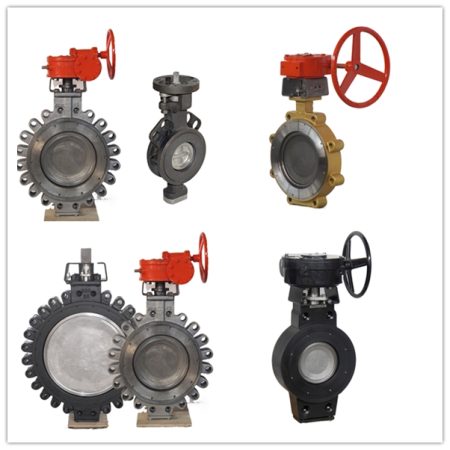
Applications of High-Temperature Butterfly Valves
High-temperature butterfly valves are a critical component in several industrial applications where control and regulation of high-temperature fluids are necessary. These valves are extensively used in power generation plants, particularly in nuclear and coal-fired power stations, where they control the flow of steam at high temperatures and pressures. They are also used in the oil and gas industry, both in upstream operations like oil extraction where they manage the flow of crude oil, and in downstream processes such as refining and petrochemical production where they handle various high-temperature fluids and gases.
In the chemical industry, high-temperature butterfly valves are utilized in various processes that involve corrosive and high-temperature chemicals. They ensure safe and efficient operation by controlling the flow rates of these substances. In the metallurgical industry, these valves find application in blast furnaces and steelmaking processes where they regulate the flow of hot gases and molten metal.
Moreover, they are used in heat recovery systems, thermal oil systems, and boiler systems to maintain the desired temperature and pressure levels. In HVAC systems, these valves control the flow of hot water or steam for heating purposes.
The food and beverage industry uses these valves in their pasteurization and sterilization processes where high temperatures are required to kill bacteria and other microorganisms. Similarly, in the pharmaceutical industry, they are used in autoclaves and other equipment that require high-temperature sterilization.
Across all these applications, high-temperature butterfly valves play a crucial role in ensuring process safety, efficiency, and reliability. Their ability to withstand high temperatures and pressures, combined with their robust design and ease of operation, make them an indispensable tool in these industries.
Explanation of where and why these valves are used.
High-temperature butterfly valves are employed in a myriad of industries where the control and regulation of high-temperature fluids is a key operational requirement. These valves are used extensively in power generation plants, for instance, in nuclear and coal-fired power stations, where they manage the flow of steam at elevated temperatures and pressures. The oil and gas industry also relies on these valves in both upstream operations like oil extraction, to handle the flow of crude oil, and downstream processes such as refining and petrochemical production, where they control various high-temperature fluids and gases.
In the chemical industry, these valves are integral to numerous processes involving corrosive and high-temperature chemicals, ensuring safe and efficient operation by controlling the flow rates of these substances. Similarly, in the metallurgical industry, they find application in blast furnaces and steelmaking processes, regulating the flow of hot gases and molten metal.
The reason for their widespread use lies in their robust design and superior heat resistance. Made from materials that can withstand extreme thermal conditions, these valves maintain their functionality and integrity even when exposed to high temperatures. This makes them an invaluable tool in any industrial setting where temperature control is crucial for safety, efficiency, and the overall success of the operation.
Examples of industries that rely on these valves.
High-temperature butterfly valves are relied upon by several industries due to their ability to control and regulate the flow of high-temperature fluids. The power generation sector, including nuclear and coal-fired power plants, heavily depends on these valves to manage the flow of steam at elevated temperatures and pressures. In the oil and gas industry, these valves are critical in upstream operations like oil extraction and downstream processes such as refining and petrochemical production.
The chemical industry utilizes high-temperature butterfly valves in processes involving corrosive and high-temperature chemicals, helping to ensure safe and efficient operations. The metallurgical industry also uses these valves in settings like blast furnaces and steelmaking processes where they regulate the flow of hot gases and molten metal.
The HVAC industry relies on these valves to control the flow of hot water or steam for heating purposes. Additionally, industries like food and beverage and pharmaceuticals use these valves in pasteurization, sterilization, and other high-temperature processes. Therefore, any industry that requires the regulation of high-temperature fluids likely relies on high-temperature butterfly valves.

Specific case studies showcasing their use in real-world scenarios.
High-temperature butterfly valves have been instrumental in various real-world scenarios, showcasing their versatility and effectiveness. For instance, in a case study involving a coal-fired power plant, the plant was experiencing frequent maintenance issues with their conventional valves due to the high-temperature steam used in the power generation process. By switching to high-temperature butterfly valves, they were able to significantly reduce maintenance downtime and enhance the efficiency of their operations.
In another case study, a petrochemical refinery was struggling with valve failures in its cracking unit, a high-temperature process that breaks down large hydrocarbon molecules into smaller ones. The introduction of high-temperature butterfly valves resulted in increased reliability and reduced operational costs due to fewer valve replacements.
A different case study involves a steel mill, where high-temperature butterfly valves were used in the blast furnace to control the flow of hot gases. These valves not only stood up to the extreme heat but also provided precise control over the gas flow, contributing to improved product quality and safety.
These case studies highlight the practical application of high-temperature butterfly valves and their role in enhancing operational efficiency, reliability, and safety in industries dealing with high-temperature processes.
Advantages and Challenges of Using High-Temperature Butterfly Valves
High-temperature butterfly valves offer several advantages across a range of industrial applications. Firstly, their robust design and material selection make them capable of withstanding extreme temperature conditions, thereby providing reliable and efficient service in high-temperature environments. This makes them an ideal choice for industries like power generation, oil and gas, chemical processing, and metallurgy where the flow of high-temperature fluids needs to be controlled.
Secondly, high-temperature butterfly valves are known for their tight sealing capabilities. The double and triple offset designs, in particular, ensure a tight seal, reducing the chances of leaks and enhancing the safety of operations.
Thirdly, these valves offer a high degree of control precision. They can be finely tuned to regulate the flow of fluids, which is crucial in processes where precise flow control is required.
Finally, compared to other types of valves, butterfly valves are relatively compact and lightweight, making them easier to install and maintain.
However, using high-temperature butterfly valves also presents certain challenges. The main challenge is the need for proper selection of materials and design to ensure that the valve can withstand the intended operating conditions. Incorrect material or design selection can lead to premature failure of the valve, resulting in operational disruptions and potential safety risks.
Another challenge is the cost. High-temperature butterfly valves, especially those designed for very high temperatures and pressures, can be quite expensive. This can be a significant consideration for businesses operating on tight budgets.
Moreover, while these valves offer excellent control precision, they may not be suitable for applications that require complete shut-off. In some cases, a slight leakage may occur, which could be problematic in certain applications.
In conclusion, while high-temperature butterfly valves offer numerous advantages, their use also comes with certain challenges. Understanding these factors is crucial when choosing the right valve for a given application.
Discussion of the benefits of using these valves.
High-temperature butterfly valves offer several notable benefits that make them a preferred choice in many industrial applications. One of the primary advantages is their ability to withstand extreme temperature conditions, making them ideal for industries such as power generation, oil and gas, chemical processing, and metallurgy, where controlling the flow of high-temperature fluids is crucial.
These valves also feature tight sealing capabilities, especially in the double and triple offset designs, which significantly reduce the chances of leaks, enhancing the overall safety of operations.
Another significant benefit of high-temperature butterfly valves is their high degree of control precision. They can be finely tuned to regulate the flow of fluids accurately, which is critical in processes where precise flow control is required.
In addition, compared to other types of valves, butterfly valves are relatively compact and lightweight. This makes them easier to install and maintain, leading to lower operational costs over time.
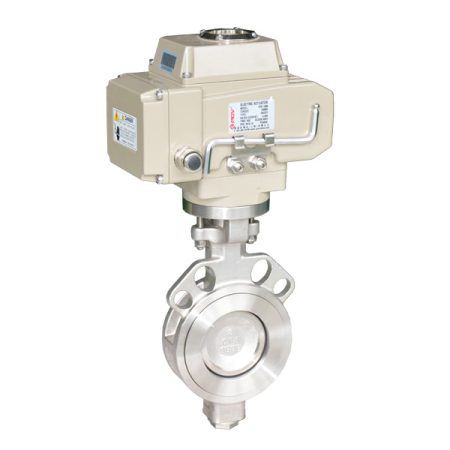
Finally, their robust design and material selection contribute to their longevity, reducing the need for frequent replacements and thereby saving on long-term costs. These benefits collectively make high-temperature butterfly valves an advantageous choice for various high-temperature applications.
Examination of any potential challenges or drawbacks and how they can be mitigated.
While high-temperature butterfly valves offer numerous benefits, they also come with potential challenges that need to be addressed for optimal performance. One of the primary challenges is the correct selection of materials and design to ensure the valve can withstand the intended operating conditions. Incorrect material or design selection can lead to premature failure of the valve, causing operational disruptions and potential safety risks. This challenge can be mitigated by thorough technical analysis and consulting with valve specialists during the selection process to ensure the chosen valve is suitable for the specific application.
Another potential drawback is the cost. High-temperature butterfly valves, particularly those designed for very high temperatures and pressures, can be quite expensive. However, this initial investment can be offset by the long-term benefits of reduced maintenance costs and improved operational efficiency.
Furthermore, while these valves offer excellent control precision, they may not provide complete shut-off in some cases, potentially leading to slight leakage. To mitigate this, it’s crucial to regularly inspect and maintain the valves, ensuring they are functioning correctly and addressing any issues promptly.
In conclusion, while there are challenges associated with using high-temperature butterfly valves, proper planning, selection, and maintenance can help to effectively mitigate these drawbacks and maximize the benefits of these valves.
Future Trends in High-Temperature Butterfly Valves
The future of high-temperature butterfly valves is set to be influenced by several emerging trends, largely driven by advancements in technology and the evolving needs of various industries. One key trend is the increasing integration of IoT (Internet of Things) technology into valve systems. This allows for real-time monitoring and control of the valves, leading to improved operational efficiency, predictive maintenance, and reduced downtime. For instance, sensors can be used to monitor the condition of the valve and predict potential failures before they happen, enabling timely maintenance and preventing costly disruptions.
Another significant trend is the development of more energy-efficient designs. As industries continue to focus on sustainability and reducing their carbon footprint, there is a growing demand for energy-efficient valves that minimize energy loss during operation. This is leading to innovations in valve design and materials to improve their thermal performance and energy efficiency.
Furthermore, there is an increasing focus on custom solutions tailored to specific applications. Given that different industries have unique requirements in terms of temperature, pressure, and type of fluid handled, manufacturers are developing more specialized high-temperature butterfly valves to meet these specific needs.
In addition, advances in material science are leading to the development of more durable and heat-resistant materials for these valves, enhancing their longevity and reliability in high-temperature applications.
Finally, with the rise of Industry 4.0, there is an increasing trend towards automation and digitalization in valve operations. This includes automated control systems for precise flow regulation and digital platforms for remote monitoring and control of the valves.
In conclusion, the future of high-temperature butterfly valves is likely to be characterized by greater integration of technology, focus on energy efficiency, customization, and advances in material science, all aimed at improving their performance, reliability, and suitability for a wider range of high-temperature applications.
Analysis of current trends in the design and use of these valves.
The current trends in the design and use of high-temperature butterfly valves are reflective of the evolving technological landscape and the increasing demand for efficiency and reliability in various industries. One of the main trends is the growing popularity of control valves, especially in the oil and gas industry, as they offer precise control over fluid flow, contributing to improved operational efficiency.
Another significant trend is the rise of smart valves, which have joined the list of “smart” devices. These valves are integrated with IoT technology for real-time monitoring and control, leading to predictive maintenance and reduced downtime.
Automatic valves are also gaining traction due to their ability to improve process efficiency by reducing manual intervention. This is particularly beneficial in industries where continuous flow regulation is required.
Furthermore, as the demand for transparency increases in both commercial and industrial market segments, valve manufacturers are rethinking their designs to meet this need.
Finally, the global industrial valves market, including high-temperature butterfly valves, is projected to grow significantly in the coming years, underlining the increasing reliance on these essential components across various sectors.
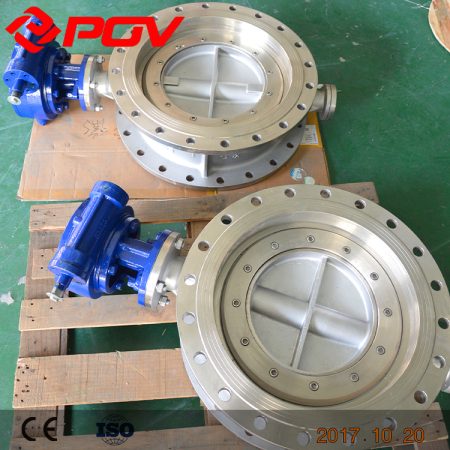
Predictions for future developments in this area.
The future of high-temperature butterfly valves is likely to be shaped by several advancements and trends. As industries continue to digitalize, the integration of IoT technology into these valves is expected to become even more prevalent. This will allow for enhanced real-time monitoring, predictive maintenance, and more efficient control, minimizing downtime and improving overall operational efficiency.
Energy efficiency is another area that’s projected to see significant developments. As global efforts to combat climate change intensify, the demand for energy-efficient valves that minimize energy loss during operation is set to increase. This will likely drive innovations in valve design and materials, leading to the development of more thermally efficient models.
Furthermore, as the push for custom solutions continues, manufacturers are expected to offer more specialized high-temperature butterfly valves tailored to specific industry needs. This includes valves designed to handle unique pressures, temperatures, and fluid types.
Materials science is also set to play a crucial role in the future of these valves. Advances in this field will likely lead to the development of more durable, heat-resistant materials, enhancing the longevity and reliability of the valves in high-temperature environments.
Finally, with the rise of Industry 4.0, automation and digitalization in valve operations are expected to become the norm. This includes automated control systems for precise flow regulation and digital platforms for remote monitoring and control. All these developments point towards a future where high-temperature butterfly valves are smarter, more efficient, and more adaptable to the changing needs of various industries.
Conclusion
In conclusion, high-temperature butterfly valves play a crucial role in many industrial applications, particularly those requiring the control of high-temperature fluids. These valves offer several benefits including their ability to withstand extreme temperatures, tight sealing capabilities, high degree of control precision, compact design, and longevity. However, they also present certain challenges such as appropriate material selection, cost considerations, and potential leakage issues. These can be effectively mitigated through proper planning, selection, and maintenance.
The current trends in the design and use of these valves reflect the evolving technological landscape and the increasing demand for efficiency and reliability. The rise of smart valves integrated with IoT technology, the focus on energy-efficient designs, and the growing popularity of control valves are all indicative of the direction the industry is moving towards.
Looking ahead, the future of high-temperature butterfly valves is likely to be shaped by further technological advancements and changing industry needs. Increased integration of IoT for real-time monitoring and predictive maintenance, development of more energy-efficient models, greater emphasis on custom solutions, advances in materials science, and the rise of automation and digitalization in valve operations are all expected developments in this field.
As we navigate this rapidly evolving landscape, it’s clear that high-temperature butterfly valves will continue to be an essential component in various industries. Their design and applications will continue to evolve in response to industry demands and technological innovations, underscoring their importance in our industrialized world. Whether you’re a valve specialist, an industry professional, or simply someone interested in industrial technology, keeping an eye on the developments in this field can provide valuable insights into the future of industrial operations.
Recap of key points discussed in the post.
In recap, this post delved into the design and applications of high-temperature butterfly valves. These valves are essential in industries requiring the control of high-temperature fluids, offering benefits such as high temperature resistance, tight sealing, control precision, compactness, and durability. However, challenges such as material selection, cost, and potential leakage also exist, which can be mitigated through proper planning and maintenance.
We also explored the current trends in valve design and use, including the rise of smart valves with IoT integration, energy-efficient designs, and the growing popularity of control valves. Looking ahead, we discussed predicted future developments such as further IoT integration, more energy-efficient models, a greater focus on custom solutions, advances in materials science, and increased automation and digitalization.
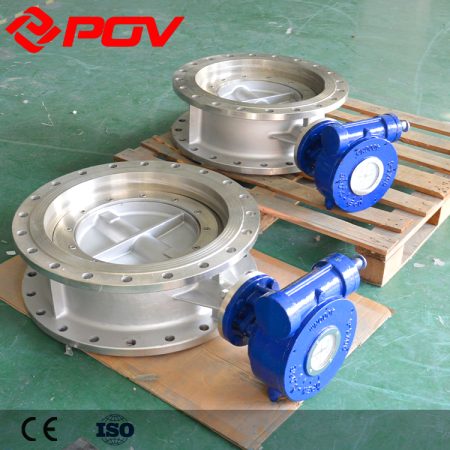
As we navigate through these changes, it’s clear that high-temperature butterfly valves will continue playing a crucial role in various industrial operations, evolving in response to industry demands and technological innovations.
Final thoughts on the significance of High-Temperature Butterfly Valves in various industries.
High-temperature butterfly valves remain a significant component in various industries, particularly those dealing with high-temperature fluids such as the oil and gas, power generation, and chemical industries. Their ability to withstand extreme temperatures, provide tight sealing, and offer precise control makes them indispensable in these settings. The ongoing advancements in technology, such as IoT integration and energy-efficient designs, are not only enhancing their functionality but also their operational efficiency and reliability. As these industries continue to evolve and demand more from their components, the role of high-temperature butterfly valves becomes even more crucial. They stand as a testament to how engineering innovations can meet complex industrial needs, and their continued evolution will undoubtedly play a pivotal role in shaping the future of these industries.


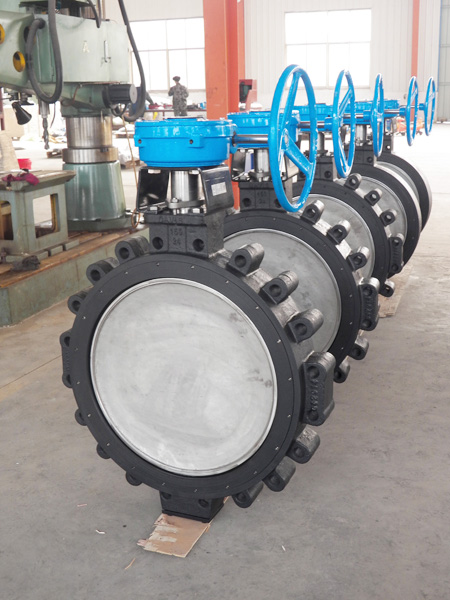
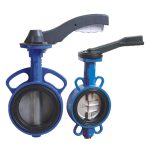
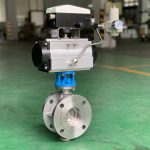
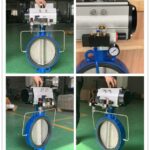
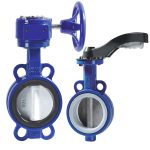
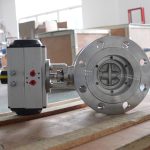
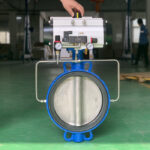
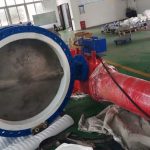
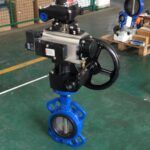
-370x270.jpg)
